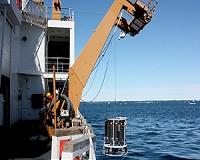| . |  |
. |
Boulder, Colo. (UPI) Jul 15, 2010 Indian Ocean sea levels are rising unevenly, posing a threat to residents in some densely populated coastal areas and islands, a new study says. The study, led by researchers at the University of Colorado in Boulder and the National Center for Atmospheric Research, attributes the sea-level rise in part to climate change. Along the coasts of the northern Indian Ocean, seas have risen by an average of about 0.5 inches a decade, the research shows. The increases are particularly noted along the coastlines of the Bay of Bengal, the Arabian Sea, Sri Lanka, Sumatra and Java. Such rises in sea level could aggravate monsoon flooding in Bangladesh and India, the study says, and could impact global climate change on both regional and global levels. The Indian Ocean's complex circulation patterns could also affect precipitation by forcing even more atmospheric air than normal down to the surface in subtropical regions. "This may favor a weakening of atmospheric convection in subtropics, which may increase rainfall in the eastern tropical regions of the Indian Ocean and drought in the western equatorial Indian Ocean region, including east Africa," said the study's lead author Weiqing Han of the University of Colorado's atmospheric and oceanic sciences department. To carry out their research, the scientists combined sea surface measurements dating back to the 1960s, along with satellite observations. The researchers point to the Indo-Pacific "warm pool," a massive bathtub-shaped area extending from the east coast of Africa west to the International Date Line in the Pacific. This area has increased by about 1 degree Fahrenheit in the past 50 years, believed mostly to be caused by human-generated increases of greenhouse gases. "Our new results show that human-caused changes of atmospheric and oceanic circulation over the Indian Ocean region -- which have not been studied previously -- are the major cause for the regional variability of sea level change," the authors wrote in Nature Geoscience magazine. Global sea level patterns aren't geographically uniform, said NCAR scientist Gerald Meehl, a co-author of the report, noting that sea level rise in some areas correlates with falls in sea level in other areas. The Indian Ocean -- bound on the west by East Africa, on the north by India, on the east by Indochina and Australia and on the south by the Southern Ocean off the coast of Antarctica -- is the world's third largest ocean and makes up about 20 percent of the water on Earth's surface.
Share This Article With Planet Earth
Related Links Water News - Science, Technology and Politics
 Sucking The Ocean Through A Straw
Sucking The Ocean Through A StrawOnboard the U.S. Coast Guard Healy (SPX) Jul 14, 2010 "I think there are quite a lot of particles in the water today." That's the analysis from Dariusz Stramski, a scientist onboard the U.S. Coast Guard Cutter Healy for NASA's ICESCAPE mission in the Arctic's Chukchi Sea. The five-week mission, NASA's first oceanographic field campaign, is studying the physics, chemistry and biology of the ocean and ice within a changing Arctic. Studying the ... read more |
|
| The content herein, unless otherwise known to be public domain, are Copyright 1995-2010 - SpaceDaily. AFP and UPI Wire Stories are copyright Agence France-Presse and United Press International. ESA Portal Reports are copyright European Space Agency. All NASA sourced material is public domain. Additional copyrights may apply in whole or part to other bona fide parties. Advertising does not imply endorsement,agreement or approval of any opinions, statements or information provided by SpaceDaily on any Web page published or hosted by SpaceDaily. Privacy Statement |